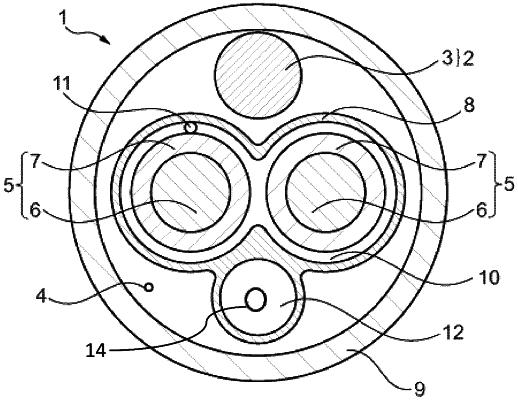| CPC B60L 53/18 (2019.02) [B60L 53/16 (2019.02); B60L 53/302 (2019.02); H01B 7/425 (2013.01); H01B 9/006 (2013.01)] | 15 Claims |

|
1. A heavy-current charging cable for charging an electric vehicle, comprising:
a ground heavy-current wire configured for serving as ground, the ground heavy-current wire comprising a ground conductor and extending in a longitudinal direction,
at least two heavy-current power wires configured for conducting positive or negative direct current, DC, each of said heavy-current power wires comprising a power conductor and a power wire insulation surrounding said power conductor, the heavy-current power wires extending parallel to the ground wire,
a liquid tight inner sheath extending in the longitudinal direction and surrounding the heavy-current power wires thereby defining a first hollow area between and around the heavy-current power wires configured to comprise liquid coolant to flow between the heavy-current power wires along the longitudinal direction, wherein the liquid tight inner sheath comprises:
a second hollow area extending in the longitudinal direction, arranged adjacent to at least one of the heavy-current power wires and configured to comprise liquid coolant to flow within the second hollow area along the longitudinal direction, and
a liquid tight outer sheath extending in the longitudinal direction and surrounding the inner sheath and the ground heavy-current wire.
|